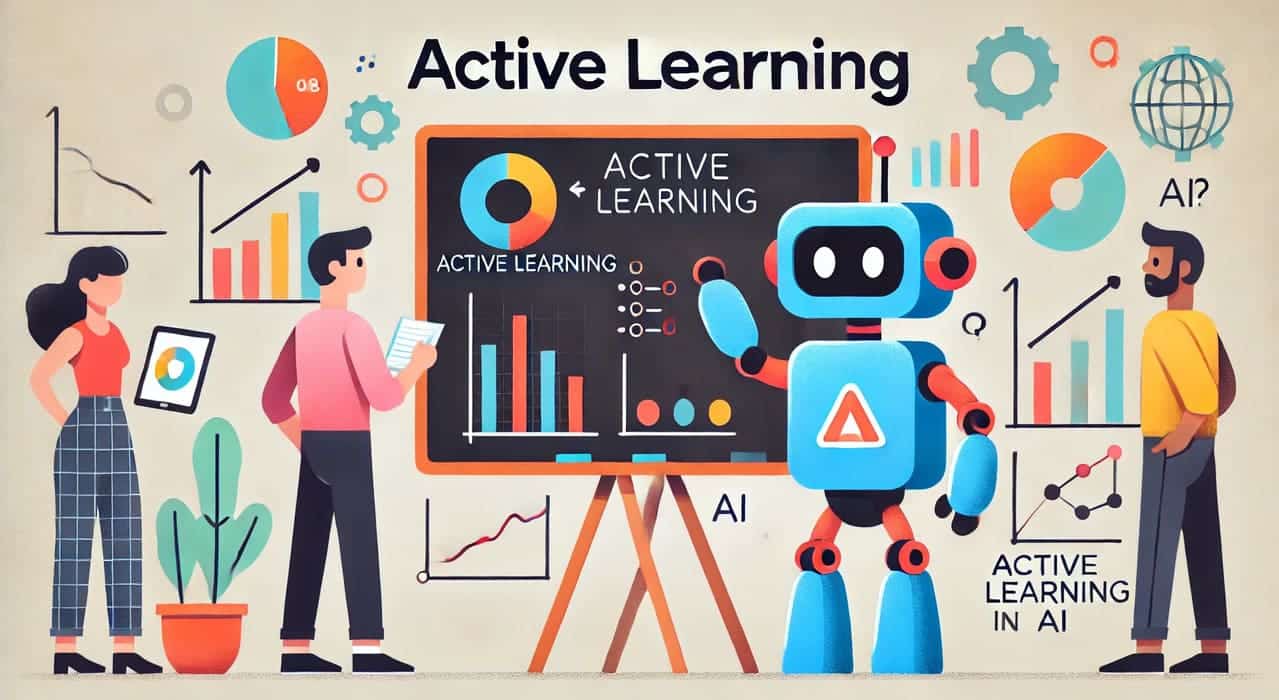Training AI models often requires massive amounts of labeled data, which can be both time-consuming and expensive. But what if there was a way to make the process more efficient without sacrificing accuracy? Enter Active Learning—a game-changing approach that allows models to improve by strategically selecting the most useful data for training.
In this article, we’ll break down what active learning is, how it works, and why it’s a must-know strategy for anyone looking to maximize the impact of machine learning with minimal labeled data. Let’s dive in!
What is Active Learning?
Active learning is a type of machine learning that enables a model to “ask” for more information. Instead of relying on a static dataset, the model identifies data points where it’s unsure and requests labels for those specific instances. This process helps the model learn more efficiently by focusing on the areas where it needs the most help.
Why Active Learning is a Big Deal
- Cost-Effective Data Labeling: Labeling data can be a significant bottleneck in machine learning. Active learning targets only the most uncertain or complex data points, reducing the amount of labeled data required to achieve high performance.
- Faster Model Training: By honing in on the most informative examples, models trained with active learning achieve accuracy faster than those trained on random or static datasets.
- Versatile Application: From healthcare diagnostics to fraud detection, active learning is applicable across industries where labeled data is scarce or expensive to obtain.
How Active Learning Works
Active learning uses specific strategies to identify which data points to query for labeling:
- Uncertainty Sampling: The model selects data points where it is most uncertain, such as cases where it struggles to differentiate between categories. For instance, in image classification, this could be distinguishing between visually similar objects.
- Query-by-Committee: Multiple models are trained on the same data, and the model queries the data points where these models disagree the most. This helps in refining the model’s understanding by focusing on areas of ambiguity.
- Expected Model Change: The model predicts which data points will have the most significant impact on its learning. By labeling these points, the model can improve more quickly and effectively.
Real-World Use Cases
- Medical Imaging: Training models to detect anomalies in medical scans is challenging due to the need for expert-labeled data. Active learning allows models to learn effectively from a smaller set of labeled examples, speeding up the development of reliable diagnostic tools.
- Financial Fraud Detection: Anomalies in financial transactions can indicate fraud, but such cases are rare and often hidden in massive datasets. Active learning helps models pinpoint these rare instances without sifting through endless amounts of labeled data.
- Chatbot Training: In natural language processing (NLP), chatbots can be trained more efficiently by using active learning to identify ambiguous phrases or uncommon queries, refining their conversational abilities.
Overcoming Active Learning Challenges
Active learning isn’t a silver bullet. There are several challenges to consider:
- Labeling Expertise: The model’s effectiveness depends on the quality of the labels provided. In specialized fields, obtaining expert labels can still be costly and time-consuming.
- Computational Demands: Active learning requires retraining the model iteratively, which can be resource-intensive, especially with large datasets.
- Choosing the Right Strategy: Different active learning strategies work better for different types of data and problems. Experimentation is often necessary to find the most effective approach.
The Future of Active Learning
Active learning is poised to play a pivotal role in the next wave of AI advancements. By reducing the dependency on large labeled datasets, it opens the door for more efficient and scalable AI solutions. As machine learning models continue to grow in complexity, active learning will become a key strategy for optimizing both cost and performance.
Whether you’re an AI enthusiast or a business leader looking to leverage machine learning, understanding active learning is essential. It’s not just about making models smarter—it’s about making them more resourceful, adaptive, and ultimately more impactful.
For more insights into cutting-edge AI techniques, check out our AI Glossary. Stay informed and stay ahead!


